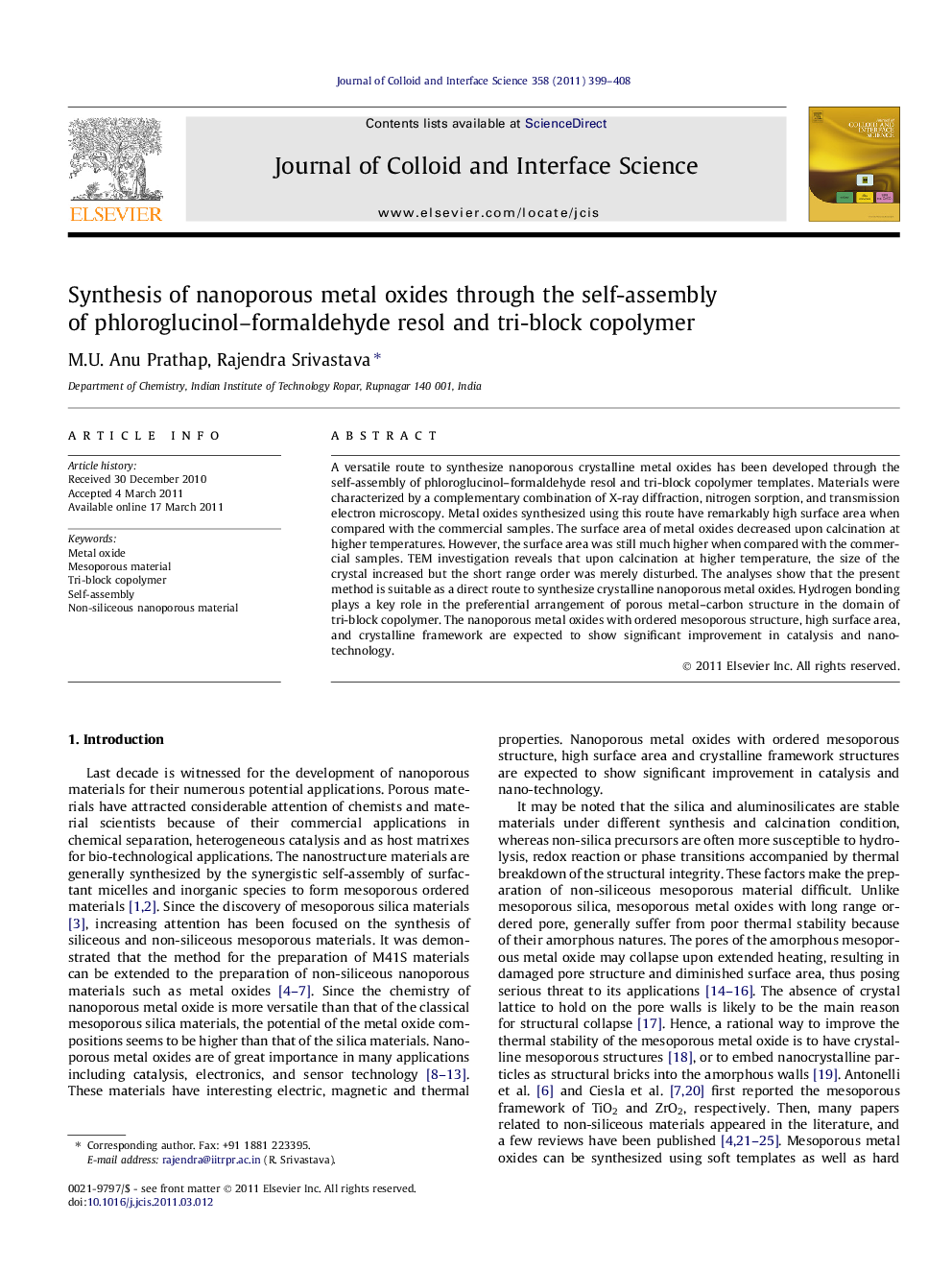| Article ID | Journal | Published Year | Pages | File Type |
|---|---|---|---|---|
| 608588 | Journal of Colloid and Interface Science | 2011 | 10 Pages |
A versatile route to synthesize nanoporous crystalline metal oxides has been developed through the self-assembly of phloroglucinol–formaldehyde resol and tri-block copolymer templates. Materials were characterized by a complementary combination of X-ray diffraction, nitrogen sorption, and transmission electron microscopy. Metal oxides synthesized using this route have remarkably high surface area when compared with the commercial samples. The surface area of metal oxides decreased upon calcination at higher temperatures. However, the surface area was still much higher when compared with the commercial samples. TEM investigation reveals that upon calcination at higher temperature, the size of the crystal increased but the short range order was merely disturbed. The analyses show that the present method is suitable as a direct route to synthesize crystalline nanoporous metal oxides. Hydrogen bonding plays a key role in the preferential arrangement of porous metal–carbon structure in the domain of tri-block copolymer. The nanoporous metal oxides with ordered mesoporous structure, high surface area, and crystalline framework are expected to show significant improvement in catalysis and nano-technology.
Graphical abstractA direct, one step route to synthesize nanoporous crystalline metal oxides has been developed through the self-assembly of phloroglucinol–formaldehyde resol and tri-block copolymer templates.Figure optionsDownload full-size imageDownload high-quality image (101 K)Download as PowerPoint slideHighlights► One step synthesis route was developed for crystalline nanoporous metal oxides. ► Phloroglucinol was found to be an excellent carbon source for their synthesis. ► Commercially available tri-block copolymers were used as structure-directing agents. ► Hydrogen bonding plays a key role for the synthesis of nanoporous metal oxides. ► Variety of nanoporous metal oxides and mixed metal oxides can be prepared.
